Endodontic retreatment
Endodontic
Retreatment
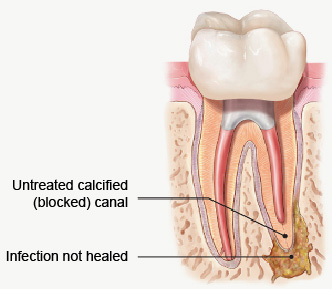
With proper care, even teeth that have had root canal treatment can last a lifetime. But sometimes, a tooth that has been treated doesn’t heal properly and can become painful or diseased months or even years after treatment. If your tooth failed to heal or develops new problems, retreatment can provide a second chance. This additional procedure may be able to support healing and save your tooth.
Root Canal Retreatment Explained
Sometimes, a tooth that has had root canal treatment may not heal properly and another treatment is needed. Watch this video to understand how root canal retreatment can save your tooth.
Why do I need another procedure?
Whenever possible, it is best to save your natural tooth. Retreated teeth can function well for years, even for a lifetime. As occasionally happens with any dental or medical procedure, a tooth may not heal as expected after initial treatment for a variety of reasons:
- Narrow or curved canals were not treated during the initial procedure.
- Complicated canal anatomy went undetected in the first procedure.
- The placement of the crown or other restoration was delayed following the endodontic treatment.
- The restoration did not prevent salivary contamination to the inside of the tooth.
- New decay can expose the root canal filling material to bacteria, causing a new infection in the tooth.
- A loose, cracked or broken crown or filling can expose the tooth to new infection.
- A tooth sustains a fracture.
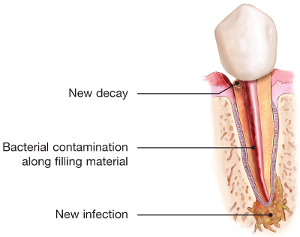
Advances in technology are constantly changing the way root canal treatment is performed, so your endodontist may use new techniques that were not available when you had your first procedure.
What happens during retreatment?
Your endodontist will discuss your options and the chances of success before beginning retreatment. If you and your endodontist choose retreatment, the endodontist will reopen your tooth to gain access to the root canal filling material. In many cases, complex restorative materials — crown, post and core material — must be disassembled and removed to permit access to the root canals.
After removing the canal filling, the endodontist can clean the canals and carefully examine the inside of your tooth using magnification and illumination, searching for any additional canals or unusual anatomy that requires treatment.
After cleaning the canals, the endodontist will fill and seal the canals and place a temporary filling in the tooth. If the canals are unusually narrow or blocked, your endodontist may recommend endodontic surgery. This surgery involves making an incision to allow the other end of the root to be sealed.
After your endodontist completes retreatment, you will need to return to your regular dentist as soon as possible to have a new crown or other restoration placed on the tooth to protect and restore it to its full function.
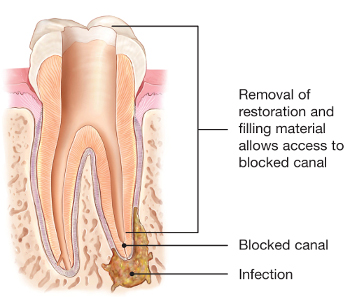
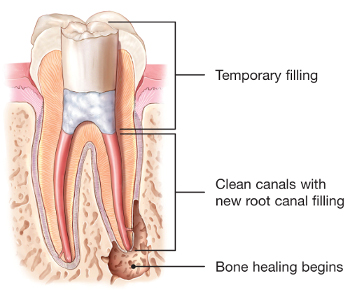
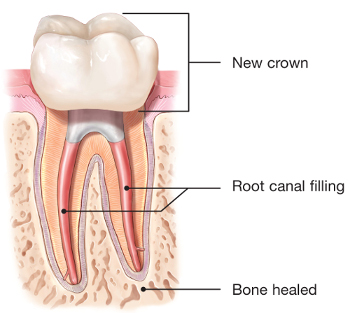
Find out what to expect when you visit our offices for treatment »
